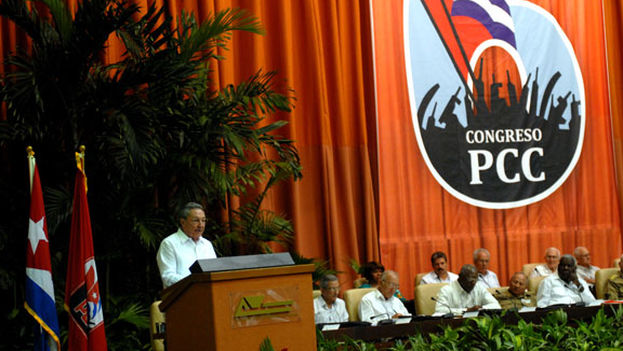
14ymedio, Miriam Celaya, Havana, 1 March 2016 — A few weeks before the much heralded 7th Congress of the Communist Party of Cuba (PCC), and half a decade since the Guidelines for the Economic and Social Policy of the Party and the Revolution were adopted on 18 April 2011, only 21 % of the 313 Guidelines have been “implemented,” while 77% “are in the process” of implementation.
These figures were announced during the 13th Plenum of the Central Committee of the PCC (Granma, 15 January 2016, front page), within the framework of the “assessment of the documents to be discussed” at the Seventh Congress, and the information does not specify which Guidelines are now in effect, nor in which sphere of the country’s life one can see the results, nor which are “in process,” nor how much time it will take for the complete consummation of this theoretical-spiritual guide destined “to guarantee the continuity and irreversibility of Socialism, the economic development of the country and the living standards of the population, combined with the necessary formation of the ethical and political values of our citizens,” quoting verbatim from the text of the Resolution approved by the 6th Party Congress.
Five years later the economic development of this country continues to remain an unattainable aspiration, people’s standard of living is declining every day, and the only thing that is irreversible is the poverty and loss of values in society. Few Cubans have any idea of the content of the Guidelines and virtually no one is interested in them.
While those 313 points were, in their time, the closest thing to a government program, ordinary Cubans have their own individual agendas, and barely two specific guidelines – not necessarily mutually exclusive – have been complied with, without the need of any guidance from the PCC and or the need to contain them in the official text: survive and migrate.
However, despite the tedium provoked by the comically hackneyed syntax of the official document, it is critical to read and analyze it if you want to follow with some degree of approximation the erratic voyage of this shipwrecked vessel, still nicknamed the Cuban Revolution.
In fact, the Guidelines, which the general-president presented at the time as the recipe for success of the much vaunted updating of the model, are currently the written acknowledgement of the irreversibility of the crisis of Castro-style socialism.
It is sufficient to review subheadings I and II relating to the domestic economy – Model Economic Management (Guidelines 1 to 37), and Macroeconomic Policies (Guidelines 38-71), respectively – to confirm the inability to achieve progress based on the renewal of the obsolete “model” and the now dead-in-the-water principle of centralized state planning, that turns its back on the natural mechanisms of the market.
Meanwhile, following a logical principal, one might assume that the Guidelines had been structured following a priority order, taking into account first the issues most urgently in need of solutions to begin to overcome the current problems of the Cuban reality. That is, it would be rational to assume that the first Guidelines to be stated should also be the first to be implemented.
But in practice, this is not the case. Strictly speaking, it should be noted that other problems of the utmost urgency have not been solved, and appear to be enunciated at the bottom of the list. For example, transport policy is formulated in sub-heading 10 (Guidelines 269-286), while the 11th and penultimate subheading contains the thorny and critical issue of housing (Guidelines 292 to 299).
We could talk until the end of time about the 313 Guidelines and their demonstrated ineffectiveness, although no Cuban with a minimum of common sense placed the slightest hope in that bulging declaration of government intentions. Nor could the general-president have been so naïve as to believe in his own scam.
In reality, the Guidelines have never ceased to be the script of a government pantomime to entertain public opinion and gain time. What’s more, one can anticipate with zero margin of error that, given their irrelevance, the upcoming 7th Congress of the Cuban Communist Party will not be given a detailed report or a balance sheet regarding the completion of that insignificant (and doubtful) 21% of the Guidelines applied to date.
Today, when the cost of living continues its unstoppable ascent, making the differences between Cubans’ purchasing power and the price of food and basic necessities irreconcilable, and while government pandering intensifies as it sells to the highest foreign bidder – provided they pay in cold hard cash – that beautiful but poor prostitute that is Cuba, one must ask the general-president when he will implement at least Guideline 55, the one that will finally unify into a single currency the two false ones that divide Cubans into two well-defined groups: those who have and can, and those who don’t. A distortion whose only present purpose is to mask the colossal inflation that exists on the island for which there is no solution proposed in any of the 313 Guidelines.
